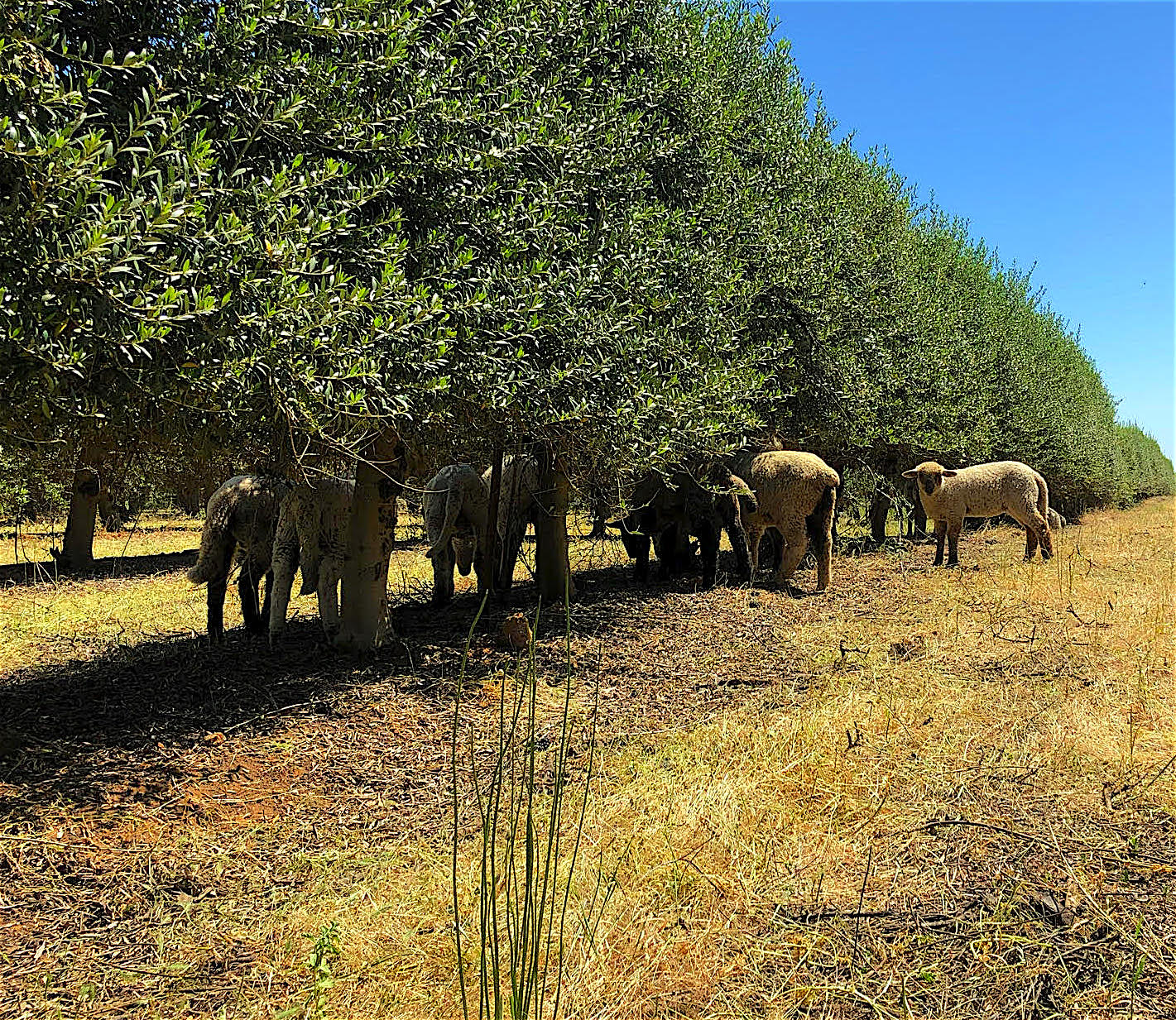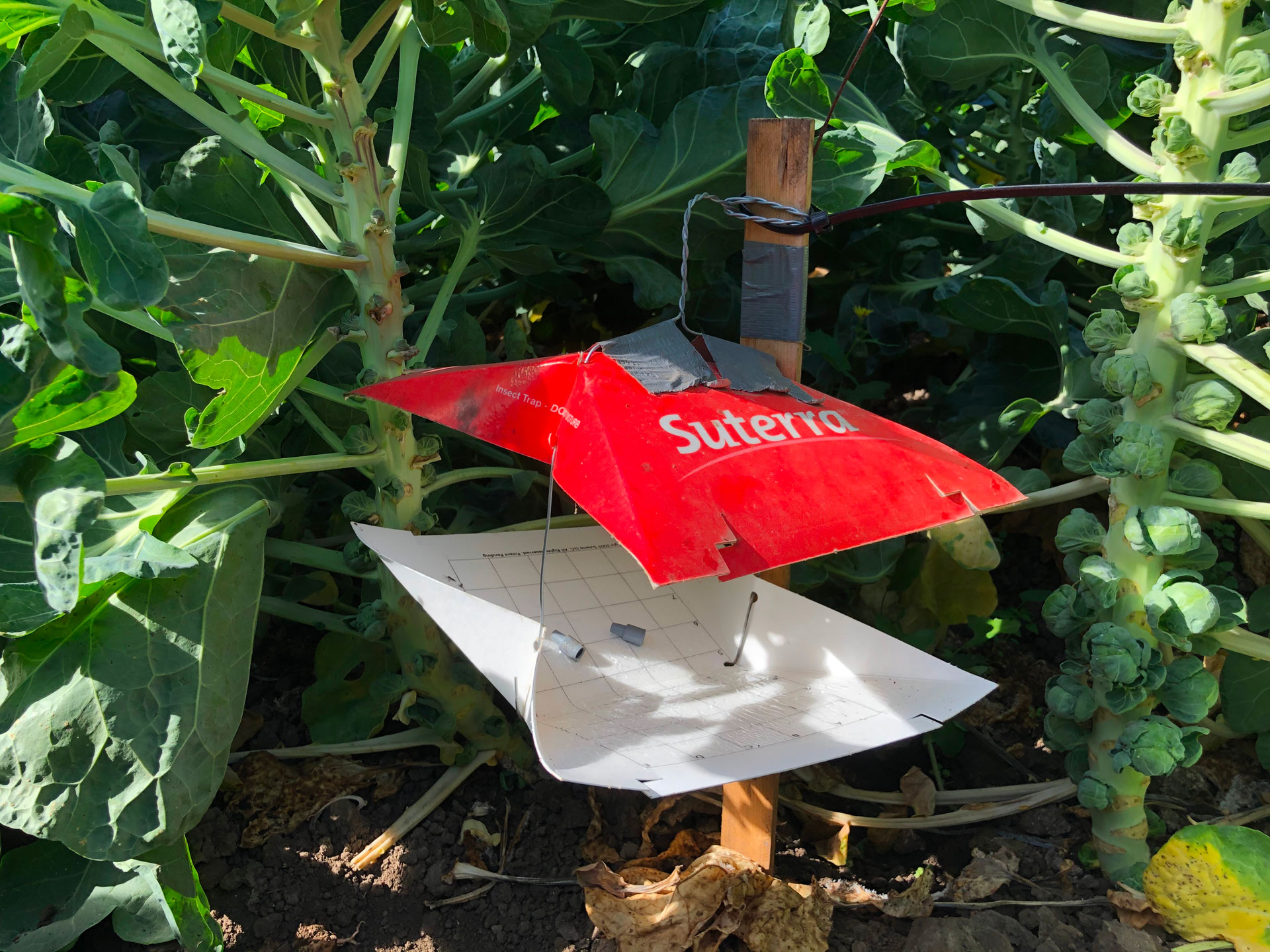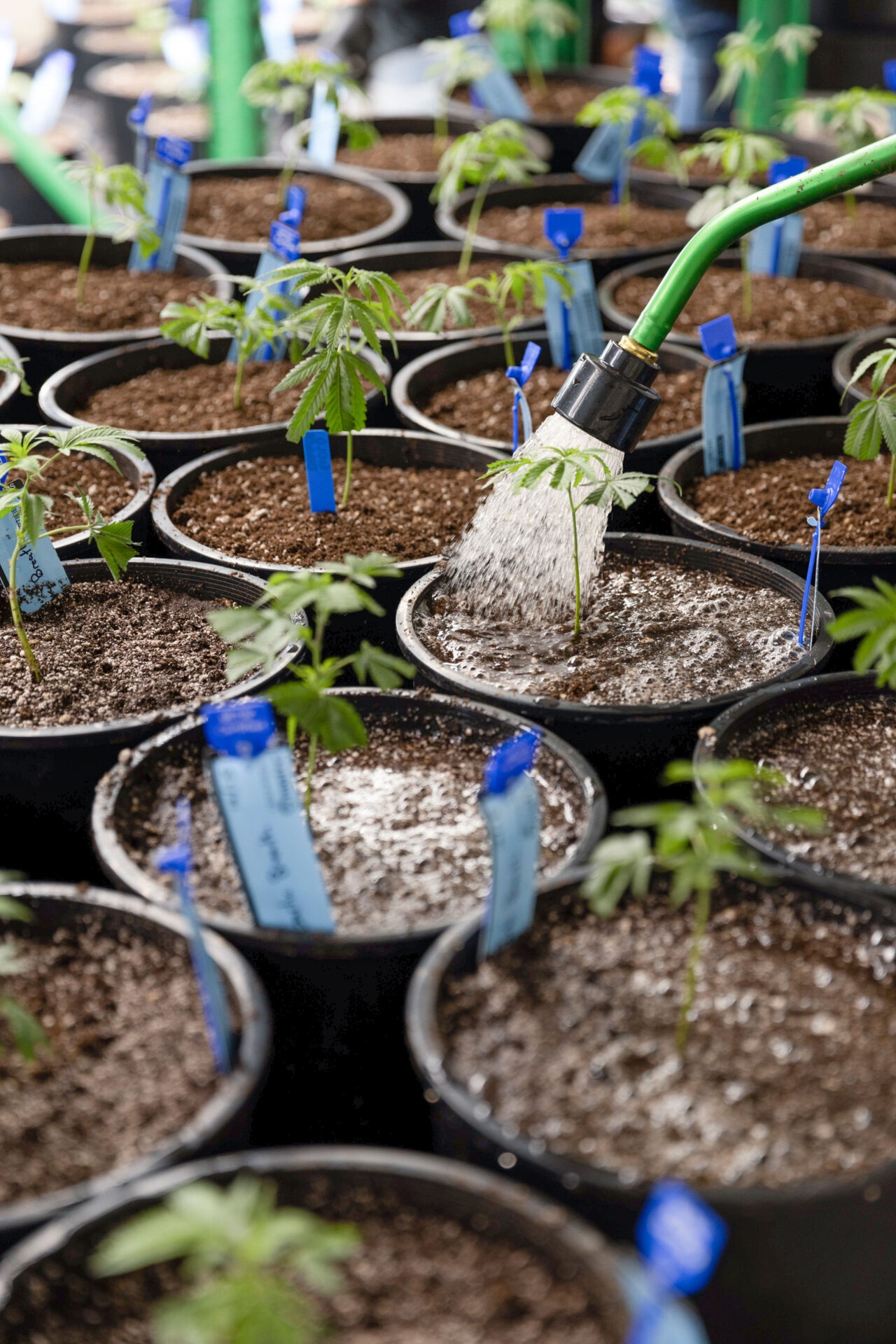
It was with three goals in mind that California Olive Ranch decided to transform and dedicate its olive acreage in Oroville, Calif. to certified organic.
The olive oil production operation is award winning on the international level, with a domestic market that reaches across the nation.
With super-high-density olive orchards in Dunnigan, Artois, Oroville and Corning, the company is known for having one of the oldest super-high-density orchards in the world, established in 1999.
“Our varieties are mainly Arbequina and Arbosana, and we have a processing plant and cold press mill in Artois,” said Clayton Handy, the company’s agronomist, who is in the process of earning his Master’s Degree in Agronomy/Regenerative Agriculture from California State University, Chico.
California Olive Ranch CEO Michael Fox and the company’s board made the decision to use the Oroville site as “test acreage” in the move from conventional growing practices to certified organic.
Handy is on the forefront of this transition as he is passionate about allowing the soil and trees to work symbiotically as nature intended.
“We started the three-year process to become certified organic in 2020,” he said. “The company had organic production previously, moved away from that practice, but made the decision to start back up.”
Holistic Approach
Handy explained the test-acreage in Oroville has three prime objectives: to regenerate the soil and produce organically grown olives which are pressed into organic olive oil.
A third goal is what Handy refers to as a holistic approach and creating a self-sufficient system.
“It’s really a theory right now, but one we would like to prove as beneficial both to the orchard and financially,” he added.
The theory goes as such, according to Handy: a great harvest can be the by-product of a very healthy, symbiotic tree/soil system.
“This system is one that requires much less input from the grower because the relationship between tree and soil is regenerative, constructive and co-beneficial,” he said.
Transition to Certified Organic
California Olive Ranch is just starting the five-step process of transitioning to organic olives. The USDA organic label is backed by a certification system that verifies farmers or handling facilities located anywhere in the world comply with the USDA Organic Regulations. Certification entails the five steps of first developing an organic system plan and second implementing that plan and having it reviewed by USDA.
Third is to receive a comprehensive “top to bottom” inspection on-site by a certifying agent.
The fourth step is having a certifying agent review the inspection report and finally receiving a decision from the certifier.
“If an operation complies with the rules, the certifying agent issues an organic certificate listing products that can be sold as organic from that operation,” according to the USDA.
Handy’s olive-growing philosophy aligns with organic and regenerative production, Handy said.
“I’m excited to see where this effort goes,” he added.
A certified organic orchard is limited on what products can be used to control weeds and pests. Products are required to be certified by the Organic Materials Review Institute (OMRI), an international nonprofit organization that determines which input products are allowed for use in organic production and processing.
“For our Oroville orchards, that means instead of spraying our tree strips for weed control, we are using cover crops and rotary spring-arm mowers,” Handy said. “In addition, chemical fertilizers are out, and the company is using fish emulsifier through fertigation as its fertilizing agent.”
He goes on to explain, “We almost want organic to be a by-product of a very healthy system, so our primary objective is overall soil health.”
The Oroville orchard’s soil has undergone testing to see where its biology levels currently stand.
“We need to know how well we are doing in quantity and diversity of the microbes in our soil, also the fungal to bacteria ratio. We need an overall baseline on how we are doing,” Handy said. “We are hoping in time to see an increase in biology within the soil.”
Biology in the soil will work for you, he goes on to say, as there are a handful of bacteria that can fix atmospheric nitrogen, all day long.
“But are they in your soil,” Handy asks. “Biology in the soil can help place all the plant’s needful nutrients into the plant, we know that, but in most conventional ag systems, we are lacking that soil biology because we spray pesticides and herbicides and put on synthetic nitrogen that is hot and burns a lot of the biology out of the soil.”
Plants as autotrophs make an abundance of photosynthate that has simple carbohydrates and proteins, and much of that is released into the soil via the roots.
“Root exudates contain the simple carbohydrates and proteins and does so in order to feed the microbiology in the soil, and in return, the microbiology can make available the nutrients that are needed by the plant,” Handy explained. “In fact, there is a chemical signal found in the exudates that the bacteria and fungus can respond to and know what nutrient to provide back to the tree. This happens in nature constantly, but the challenge we have in conventional ag today is that the natural system has been weakened.”
This weakness, said Handy, comes about from deep ripping of the soil, fumigating, spraying and applications of fungicides, herbicides and synthetic fertilizers.
“The more we do these practices, the more we are chained to them because it creates a system void of microbes,” he added. “I like to call them trees on life-support.”

Cover Crops
California Olive Ranch is working to regain the natural biology, both in diversity and quantity.
“We can do that by increasing the amount of green cover on our fields. So, we plant a very diverse cover crop, diversity being a key,” Handy said.
According to Dr. Christine Jones, soil ecologist and cover crop specialist and founder of Amazing Carbon in Australia, multi-species covers in orchard and vineyard inter-rows provide the perfect vehicle to capture and store soil carbon, increase water-use efficiency, improve the nutrient density, flavor and keeping qualities of produce and reduce the incidence of pests and disease.
“Dr. Jones’ suggestion in cover crop diversity is eight-plus species,” Handy added. “That includes nitrogen fixers, other broadleaves and grasses.”
This year is the second year the Oroville test-acreage has been planted in diverse cover crop.
“We planted in the fall in anticipation of a good rainy season so we have a good stand of cover crop,” Handy said. “That is one thing we can do to increase biology.”
In addition, the ranch is working to maximize the plant matter on top of the soil.
“That plant matter will eventually become carbon, and releases an abundance of root exudates into the soil, what is referred to as liquid carbon, and we want that in the soil, in the system,” Handy explained.
The ranch tries to stall mowing until the cover crop reaches ‘boot-stage’ to maximize growth.
“What you see on top is what you would see in the ground,” Handy added. “This adds organic material, and that breaks down into organic matter to feed the soil. As you increase organic matter, you also increase water retention. The formula is something like for every 1% increase in organic matter, you have 25,000 gallons of water retention.”
In a study at UF/IFAS Extension, the research team said just like a sponge, soils with high organic matter and aggregates can absorb and hold water during rainfall events and deliver it to plants during dry spells.
USDA Natural Resources Conservation Service states that “for every 1% increase in soil organic matter, U.S. cropland could store the amount of water that flows over Niagara Falls in 150 days.”
Cover crops also help break up the soil and help with water absorption.
“You can think of each blade of grass as being a straw and providing a vehicle, a pathway for water infiltration and absorption into the ground,” Handy said. “In time, you can really increase your water infiltration. We don’t want anything to sheet off or suffer erosion.”
He goes on to say that the more you can increase life in the soil, the higher and faster the infiltration rates.
“For us, this is still all in theory as this is only the second year we are implementing these practices,” Handy said. “But we have seen the studies, and we know there are things we can do to increase soil health, and soil health is determined by the amount of biology you have working for you in the system. To have that, you need carbon, and in order to have carbon, you need a source.”
For the test-acreage, that means cover crop and compost.
“Those are the two primary sources of carbon. We put on 2 tons of vegetative compost per acre. We also did a trial of sheep grazing on 20 acres of the Oroville acreage, and we found it to be very successful,” Handy said.
The sheep program provided two-fold benefits through grazing and natural fertilizers from the ruminants. Handy said they plan on increasing the sheep grazing program due to its success in the trial.
“Although what we are working towards right now is just in theory, if we are going to go the organic route, we are going to go the route of a holistic system approach where we specifically look at the system as a whole to increase its overall health, to decrease the need for input and increase the quality of the overall product,” Handy said.





